A few weeks ago I wrote about how nitrogren fertilizer is an essential part of farming because it is an essential part of protein, and thus nutrition for humans.
Across farming philosophies – from conventional to progressive to organic to local – the fact that nitrogen is essential to life is an undisputed fact. Beyond that agreement, however, opinions begin to differ regarding exactly what type of fertilizer is best to use.
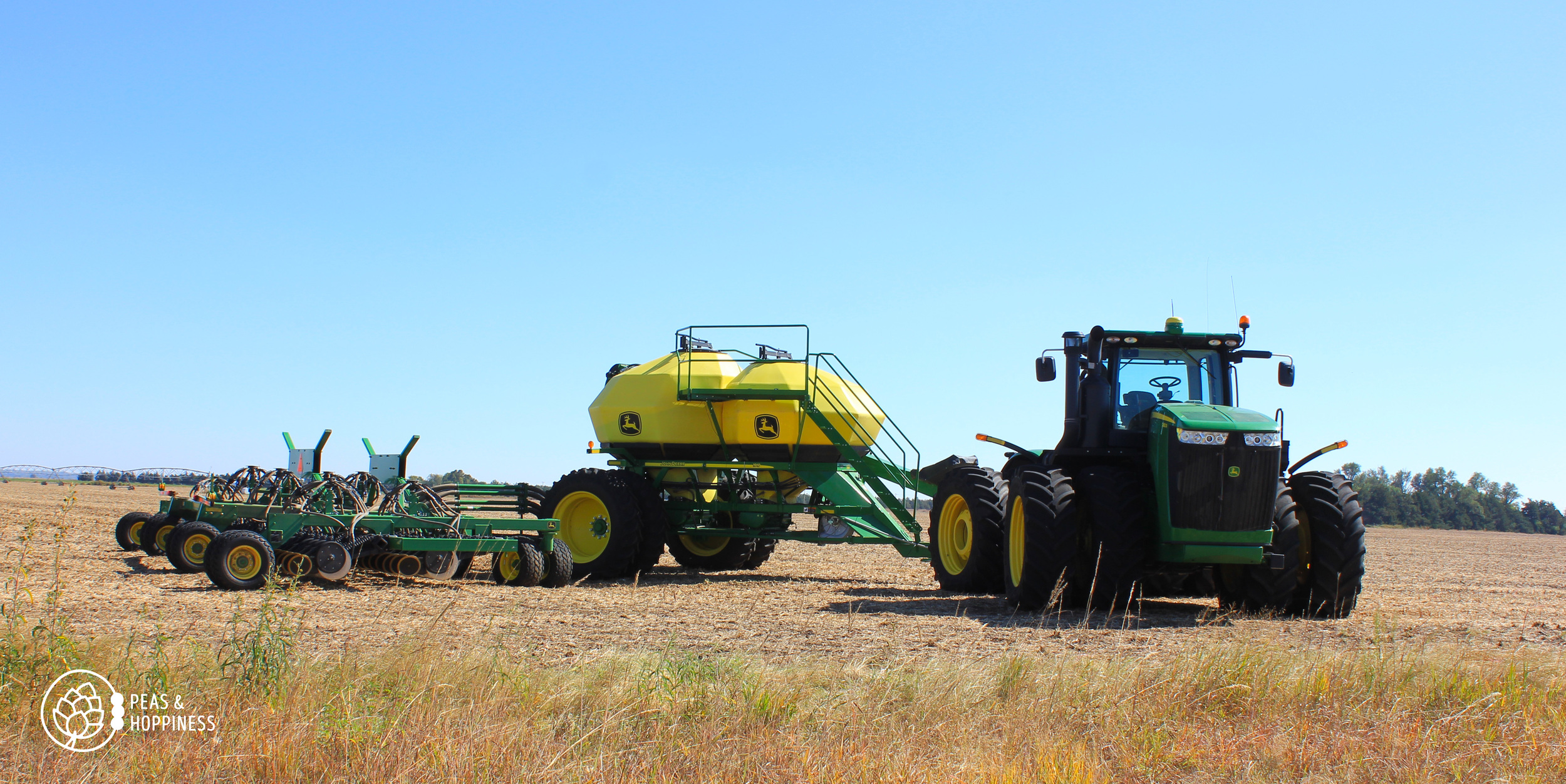
The air-seeder, used to drill wheat. The front hopper contains wheat seed; the rear hopper contain dry synthetic nitrogen
While I can in no way compare to a trained agronomist’s opinion, I’d like to offer a (very) brief overview of the options farmers have today about what types of nitrogen fertilizer are available and review a few of the pros and cons of each.
Synthetic Fertilizer
There are two forms in which synthetic fertilizer comes – liquid and dry. Each have their own set of benefits and drawbacks, but for simplicity’s sake I’ll talk about them as a whole.
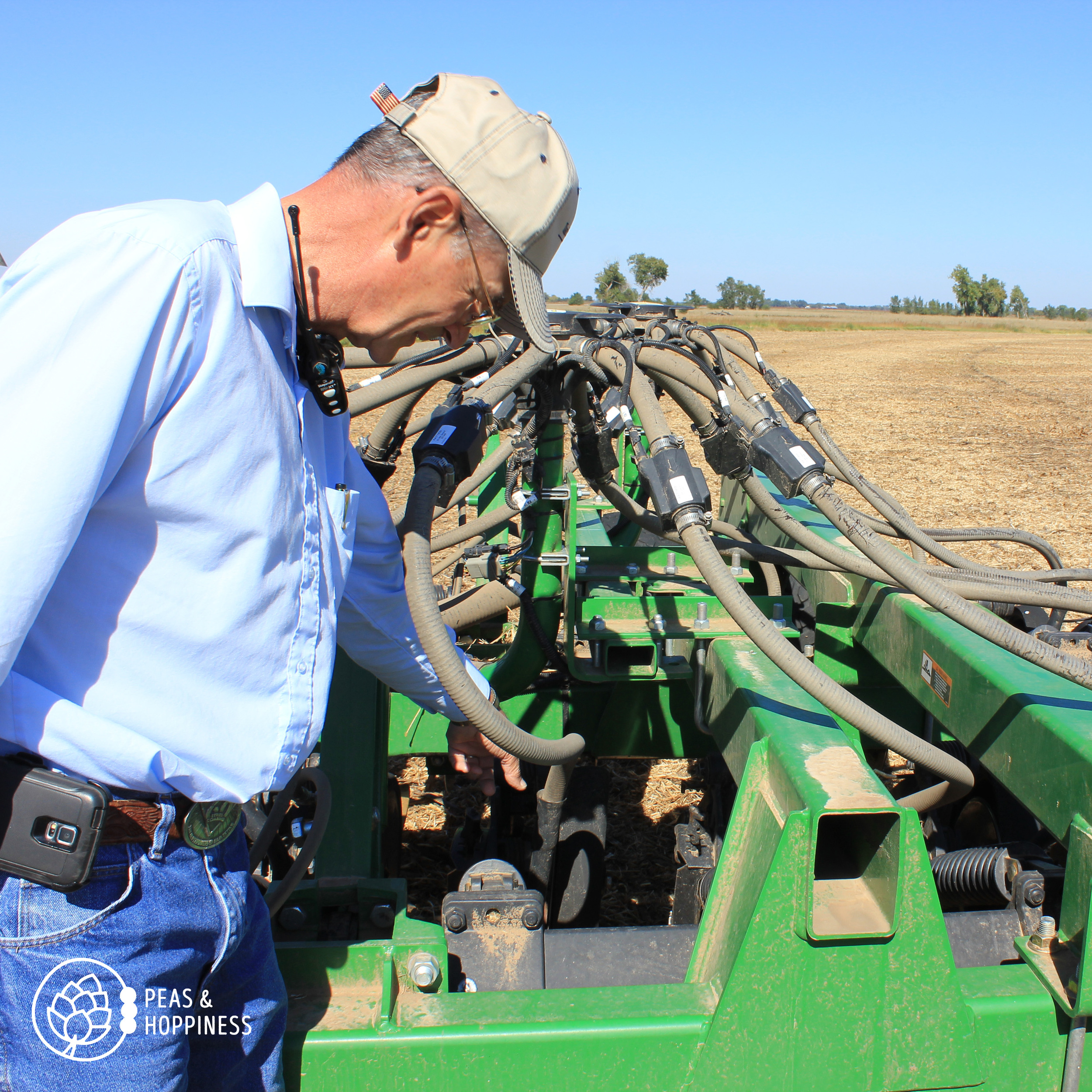
Dad (Lee) explains how the air seeder works – using air pressure to push a wheat kernel underground, followed by a heavy disc that cuts through last season’s residue to place dry fertilizer under the ground next to the seed
Different types of fertilizer have a different amount of nitrogen per pound. For example, anhydrous ammonia (a type of liquid fertilizer – if you grew up in the country, that’s what’s in those white tanks that are sometimes seen parked in fields) is about 82% nitrogen. So 100 lbs of anyhydrous ammonia contains about 82 lbs of pure nitrogen.
Pros of Synthetic Fertilizer
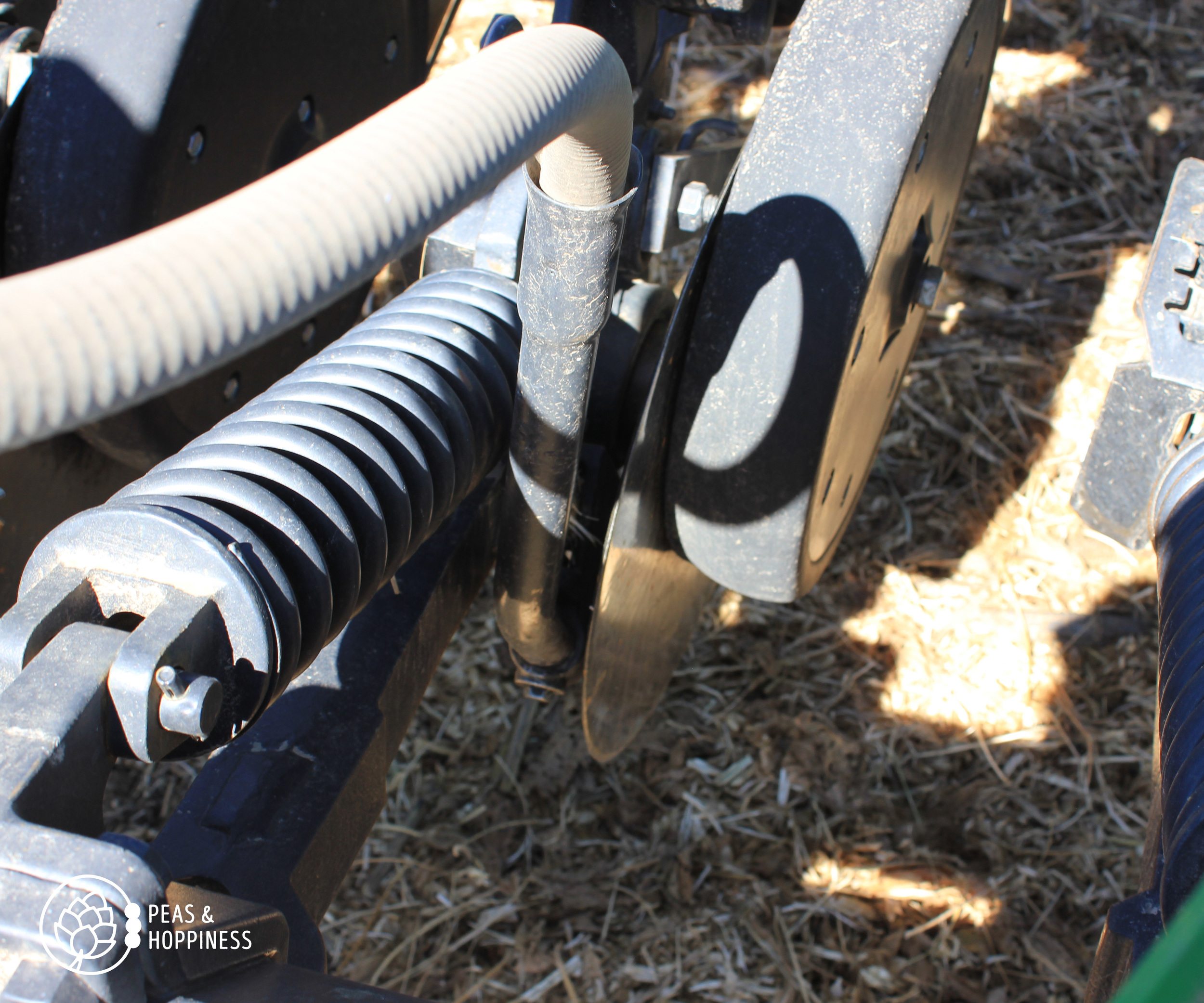
The heavy disc of the drill
-
Easy to ship – liquid forms can be shipped via pipeline, dry pellet forms can be easily hauled. This can reduce shipping costs (and associated environmental impacts) of applying fertilizer
-
It’s not stinky – the below (organic) types of fertilizer definitely have an odor
-
Precise calculations – because it is synthetic, there is consistency throughout the types of fertilizer. What you order is what you’re going to get
-
Purity – nitrogen-only fertilizers eliminate the stress of calculating how much other nutrients are also being applied. For example, phosphorus is higher in most organic fertilizers and can reach toxic levels in the soil if not carefully regulated.
-
Easy to store – it’s dense, it’s compact, it has no odor, and it won’t spoil, meaning that you can have nitrogen just when you need it
Cons of Synthetic Fertilizer
-
Too pure? – Because they are made from scratch and don’t come from nature, there are no micronutrients (selenium, copper, magnesium, etc.) found in synthetic fertilizers
-
Some chemicals are hostile to soil microbes – anhydrous ammonia, for example, has been shown to reduce the number of bacteria in the soil. For a no-till farmer, like my dad, this is a problem because he depends on the soil microbes to break down the previous crop’s residue (because he doesn’t plow his fields)
-
Some chemicals are toxic to humans – please don’t breath ammonia fumes; following appropriate safety precautions for chemicals (whether synthetic or organic) is always important
-
The application method can disturb the soil – anhydrous ammonia is only in liquid form under pressure; at atmospheric pressure it is a gas, so to apply it to a field, it must be sliced into soil to prevent it from reverting back to gaseous nitrogen, which plants can’t use. Slicing through the soil is certainly a sin in the book of no-till farming, because it again disrupts the crop residue.
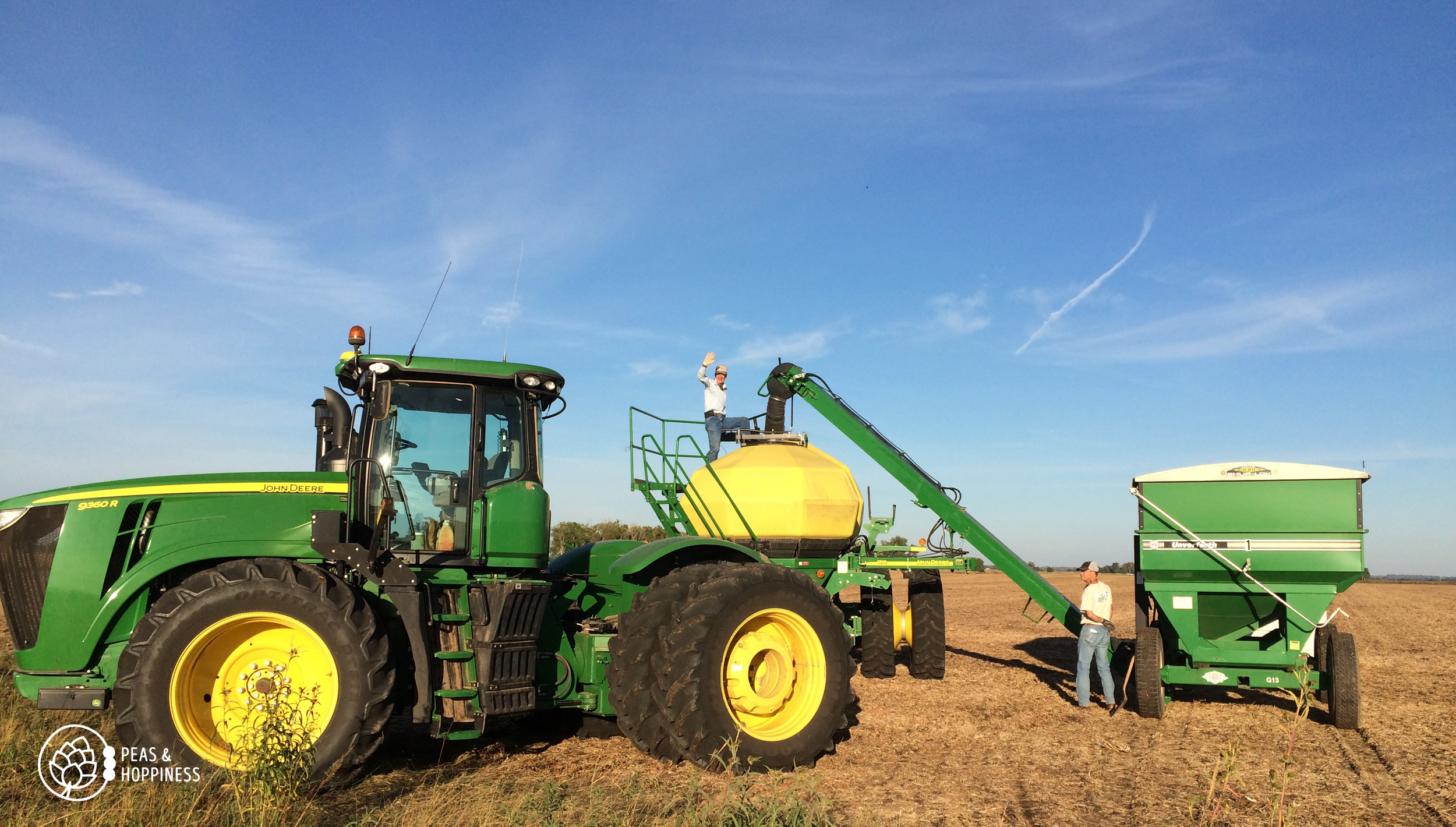
Dad and Vince loading fertilizer into the hopper of the air seeder
Organic Fertilizer
I’m going to delineate between organic and certified organic fertilizers. The word organic has been commandeered by a niche market of farmers and is now regulated by the USDA. However, the origin of the word organic simply meant that a molecule contained the element carbon, which is an essential component of all living things.
>
“Organic:
a: of, relating to, or derived from living organisms
b: of, relating to, or containing carbon compounds”
In conventional farming (meaning non-certified organic), farmers often use both synthetic and organic fertilizers, such as chicken litter, manure, or compost. As with synthetic forms of nitrogen, these fertilizers also have their pros and cons.
Pros of Organic Fertilizer
-
Contains micronutrients – including potassium and trace minerals such as zinc and sulfur. A little of these nutrients is important for life, but too much can cause toxicity
-
Recycles (upcycles?) organic material – rather than spending energy to synthesize nitrogen, using chicken litter or manure completes the cycle of nitrogen naturally
-
Slow release of nutrients – directly applying synthetic nitrogen to plants can “burn” them as it is too harsh. The nutrients in organic fertilizers are trapped within substances and so gradually release the nitrogen to plants
-
Structure – adding organic fertilizer not only adds nutrients, but also adds structure to the soil to improve water movement and gives healthy microbes in the soil something to eat
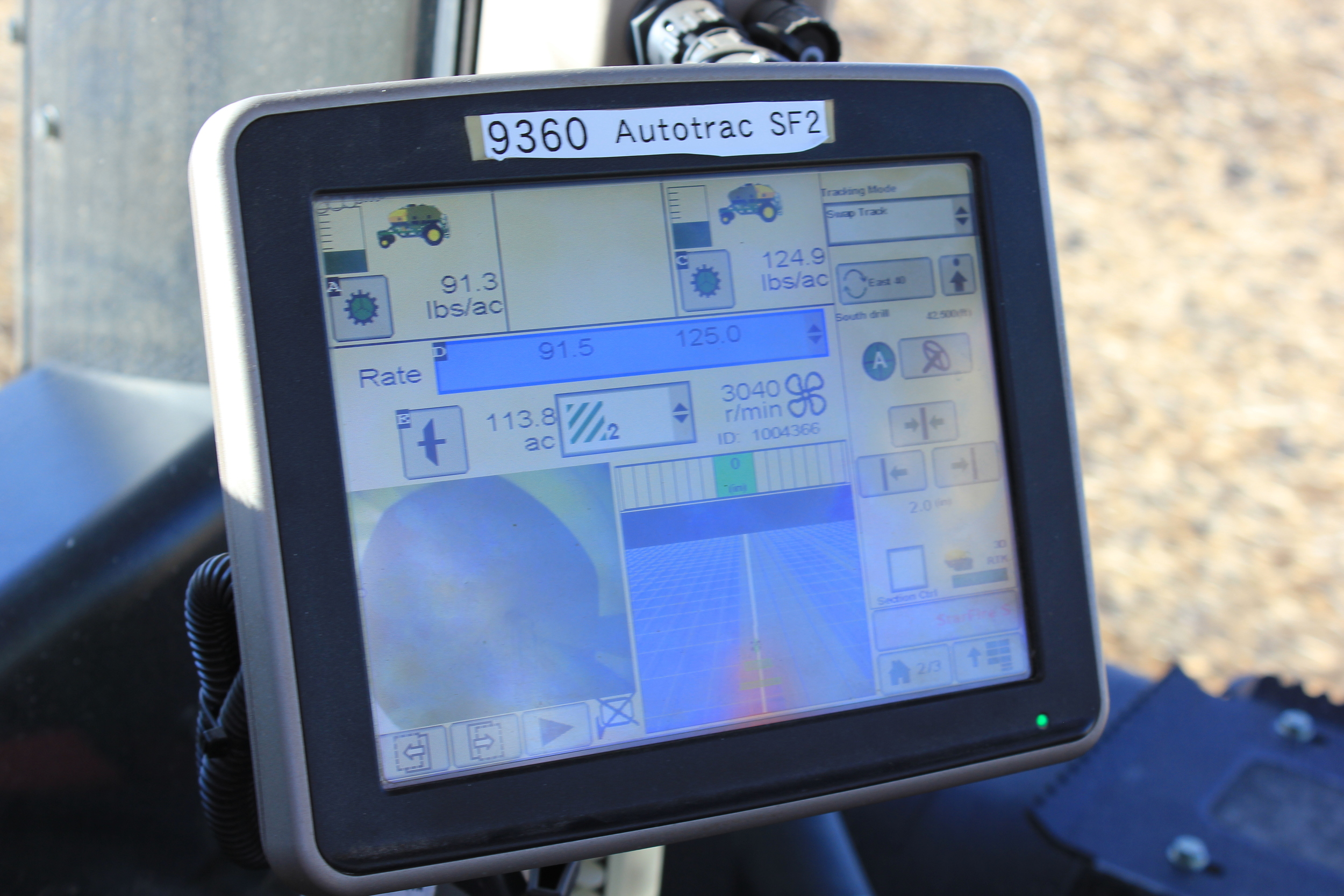
The screen of the GPS unit that shows how seeds are planted and nitrogen is applied at variable rates based on the previous year’s yield data
Cons of Organic Fertilizer
-
Imbalance of nutrients- although also an essential nutrient for plants, phosphorus can build up in the soil to levels that are toxic to plant life; runnoff from fields causes algae blooms. Thus, farmers who use organic fertilizer need to carefully monitor the soil content of phosphorus using soil testing to prevent an imbalance
-
Inefficient to ship – manure and chicken litter are heavy and bulky, so it’s expensive (both in $$ and environmental impact) to ship these sources of fertilizer very far. Best used when sourced within the same county
-
Contamination – depending on the quality of the compost or manure, applying organic fertilizer can potentially introduce weeds or bacteria to the soil
>
“100-300 lb of synthetic fertilizer contains about the same amount of nitrogen as two tons of chicken litter or 10 tons of manure.”
Certified Organic Fertilizers
When you buy an organic product in the store, you are purchasing something that has been produced using a very specific set of guidelines. The USDA’s National Organic Program (NOP) oversees the production of organic farmland and livestock. Fertilizers used must be organic (using the above definition), except in certain cases, in which some non-organic products are permitted and some organic products are prohibited.
The pros and cons of using certified organic fertilizer are that of the organic fertilizer listed above. The main added advantage is that these fertilizers can be applied to fields producing organic crops. However, they are also likely to be more expensive than non-certified organic fertilizers, as certified organic fertilizers need to be verified to be part of a certified organic farming operation.
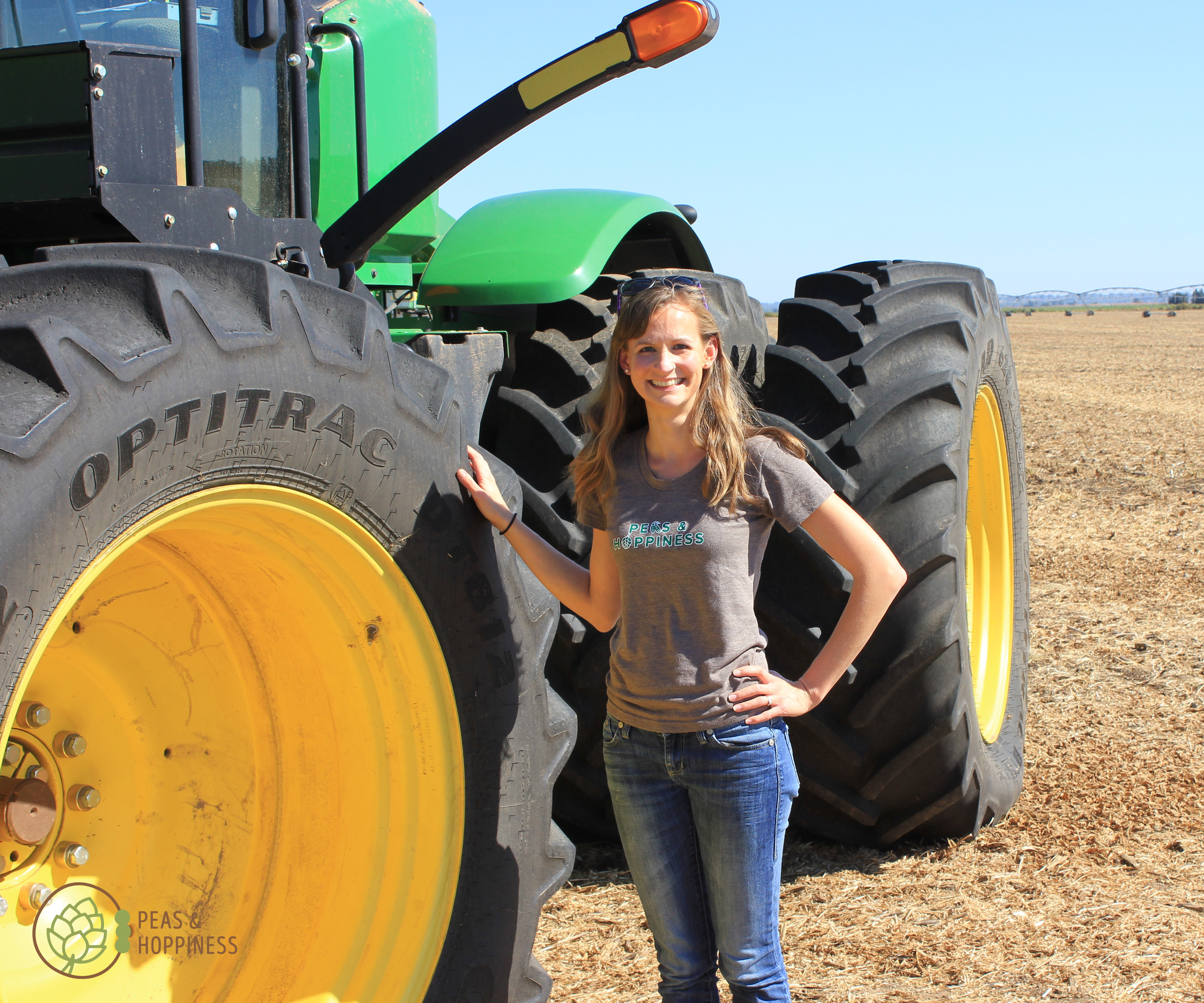
Standing next to the giant tire of the air seeder. This big equipment is what makes Kansas the bread basket of the world!
To read more about how these options might affect your own back yard, check out this article from The Backyard Boss; they have great tips and insight about how to feed your indoor and outdoor plants.
The selection of the type of fertilizer to use requires thoughtful consideration, as each type offers its own set of benefits and drawbacks. As such, many conventional farmers choose a variety of fertilizer types based on soil quality, cost, availability, and plant needs. Like everything else with farming, there is not a clear-cut answer as to the right option.
So, the next time you see him or her, thank your local farmer for making these thoughtful decisions.
With love, from Peas and Hoppiness.